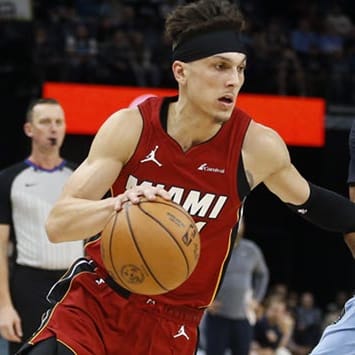This article is part of our The Prospect Post series.
For this week's Prospect Post, NBA Editor Nick Whalen and I conducted a re-draft of the 2014 lottery, based solely on current value. We did not factor in team context or trades that happened on draft night. This is snapshot of what the draft would look like if these 14 teams got a mulligan. Since I talked Nick into doing this, he was awarded the first pick. Here are the results and our explanations:
1. 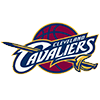 Cleveland Cavaliers - Joel Embiid
Cleveland Cavaliers - Joel Embiid
(Originally went No. 3 to the 76ers)
Nick's reasoning: Thirty-one minutes-restricted games into his career, Embiid has made this pick a no-brainer. While Andrew Wiggins and Jabari Parker have for the most part lived up to their billings as the draft's top two selections, Embiid has already established himself as having the highest ceiling of the three, which is ultimately what most teams are seeking at No. 1 overall. Embiid's usage rate -- currently north of 36 percent -- may be unsustainable, but he's shown no signs that his temperament and style of play won't acquiesce with what will be a much more experienced and talented roster down the road. If there's a knock on Embiid, it's that his long-term health is still a relative question mark after he missed the entirety of what would have been his first two seasons in the NBA. But is it enough of an unknown to dissuade a team from passing on a 7-2 giant who dribbles like a guard and shoots 37
For this week's Prospect Post, NBA Editor Nick Whalen and I conducted a re-draft of the 2014 lottery, based solely on current value. We did not factor in team context or trades that happened on draft night. This is snapshot of what the draft would look like if these 14 teams got a mulligan. Since I talked Nick into doing this, he was awarded the first pick. Here are the results and our explanations:
1.  Cleveland Cavaliers - Joel Embiid
Cleveland Cavaliers - Joel Embiid
(Originally went No. 3 to the 76ers)
Nick's reasoning: Thirty-one minutes-restricted games into his career, Embiid has made this pick a no-brainer. While Andrew Wiggins and Jabari Parker have for the most part lived up to their billings as the draft's top two selections, Embiid has already established himself as having the highest ceiling of the three, which is ultimately what most teams are seeking at No. 1 overall. Embiid's usage rate -- currently north of 36 percent -- may be unsustainable, but he's shown no signs that his temperament and style of play won't acquiesce with what will be a much more experienced and talented roster down the road. If there's a knock on Embiid, it's that his long-term health is still a relative question mark after he missed the entirety of what would have been his first two seasons in the NBA. But is it enough of an unknown to dissuade a team from passing on a 7-2 giant who dribbles like a guard and shoots 37 percent from three? Probably not.
2.  Milwaukee Bucks - Nikola Jokic
Milwaukee Bucks - Nikola Jokic
(Originally went No. 41 to the Nuggets)
James' reasoning: If Andrew Wiggins or Jabari Parker were above-average defenders, I'd take them over Jokic. However, considering all three are below-average defenders (Wiggins can flash good defense but he is too often unengaged), I'll take the most gifted offensive player who doubles as the best rebounder and passer of the bunch, and that is Jokic. He only recently started playing close to starter's minutes, but is averaging 21.5 points, 11.5 rebounds, 5.8 assists, 1.0 steals and 1.1 blocks per-36 minutes, while also shooting 58.9 percent from the field, 33.3 percent from three-point range and 82.4 percent from the line. He won't turn 22 until later this month, and his passing is already the stuff of legend. It's possible he will never be even an average defender, but a player who can pass, shoot and dribble like he can at the center position is incredibly rare, and it opens up a lot offensively. This was a tough call, and could look silly in a couple years if Parker or Wiggins takes a big leap forward.
3.  Philadelphia 76ers - Andrew Wiggins
Philadelphia 76ers - Andrew Wiggins
(Originally went No. 1 to the Cavaliers)
Nick: With Jokic off the board at No. 2, James left me with the most difficult decision in this re-draft. Even as Wiggins struggled to do much of anything but score the ball through his first two NBA seasons, he would have been the near-consensus pick over Parker if this exercise were conducted just a few months earlier. But Parker's emergence this season, looking more like the confident, aggressive scorer and playmaker he was at the college level, has rekindled the debate that waged in the weeks leading up to the 2014 draft. That said, the Timberwolves' struggles as a team have jaded what's been a strong individual season for Wiggins, who's averaging career-bests in scoring (22.2 PPG) and assists (2.4 APG), while shooting 45 percent from the field and 34.3 percent from three, up more than four percentage points from his 2015-16 mark. Wiggins still doesn't rebound nearly as well as he should, and he's fallen short of expectations defensively, but Parker has similar flaws and on some nights looks like a bottom-three defender at his position in the entire NBA.
4. 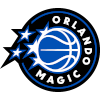 Orlando Magic - Jabari Parker
Orlando Magic - Jabari Parker
(Originally went No. 2 to the Bucks)
James: This is the clear end of the second tier, and I would have happily taken Wiggins if Nick had taken Parker. I have long been a Wiggins over Parker guy, but this season has forced me to reevaluate that stance. It is stunning to see Parker shooting 36.7 percent from beyond the arc, and while he is still a poor defender, especially off the ball, he can be hid well enough on defense to make him a net positive. The motor is where Parker gets a clear advantage over Wiggins, as Parker never stops, especially on the glass. The fact that Wiggins is getting beaten by Parker this year in rebounds, steals and blocks is an absolute indictment, given Wiggins' elite length and athleticism. It's too early to say he won't get better in those areas, but right now Wiggins is very one-dimensional. Parker is too, but he is more efficient than Wiggins, and the offense does not need to run through him.
5. 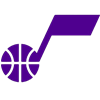 Utah Jazz - Zach LaVine
Utah Jazz - Zach LaVine
(Originally went No. 13 to the Timberwolves)
Nick: There's a clear drop off between picks four and five, but at times this season LaVine looked like he might be ascending toward stardom. A torn ACL earlier this month halted what was an encouraging half-season for the UCLA product, one in which he flashed improved playmaking ability, despite entering a new system and playing almost exclusively off the ball. LaVine is still a pure scorer at heart, though, and he's on the short list of young players who could conceivably blossom into a borderline-No. 1 scoring option down the road, if given the opportunity.
6.  Boston Celtics - Rodney Hood
Boston Celtics - Rodney Hood
(Originally went No. 23 to the Jazz)
James: Hood has not progressed as a scorer the way I hoped, as his TS% is actually down from 54.2 percent to 52.8 percent this year. However, he still shoots at a solid clip from beyond the arc (36.6 percent), and has rare size (6-foot-8, 206 pounds) at the shooting guard position. That size and defensive versatility were what led to me giving him the edge over Gary Harris. He is also better than Harris at getting his own shot, but that's not as valuable of a skill for a supporting player like Hood. I'd happily sacrifice the one-on-one skills for Harris's efficiency. The fact that a player of this caliber came off the board with the No. 6 pick in this exercise speaks volumes about the lack of depth in this class. For instance, the Jazz might not be able trade Hood, a proven commodity, for the 10th overall pick in this year's draft.
7. 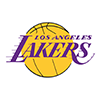 Los Angeles Lakers - Clint Capela
Los Angeles Lakers - Clint Capela
(Originally went No. 25 to the Rockets)
Nick: Here's where things get difficult. Outside of the top five -- maybe even the top four, depending on who you ask -- in this draft, it likely comes down to individual preference. Independent of hypothetical fit/team need, I went with Capela. He's not as skilled as some of the other big men in the class, but he's an excellent athlete who fits the mold of the modern, pick-and-roll center. Capela is never going to dribble coast-to-coast like Jokic or shoot the three like Embiid, but he protects the paint on one end and converts 73 percent of his looks at the rim on the other. For teams built around playmaking wings or guards, Capela is the ideal unselfish, defensive-minded big.
8. 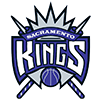 Sacramento Kings - Gary Harris
Sacramento Kings - Gary Harris
(Originally went No. 19 to the Bulls and was traded on draft night to the Nuggets)
James: I considered Harris over Hood with the sixth pick, but went with Hood's size and defensive versatility over Harris' high-end shooting. He is not a great defender by any means, but that is not unique among shooting guards who shoot for a high percentage from the floor (47.4 percent) and from three-point range (41.5 percent). In addition to getting better from beyond the arc, Harris has added necessary muscle since coming into the league and is no longer noticeably undersized at the two. He is a good cutter, but needs to work on tough finishes.
9. 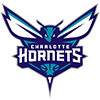 Charlotte Hornets - Aaron Gordon
Charlotte Hornets - Aaron Gordon
(Originally went No. 4 to the Magic)
Nick: Perhaps more so than any player in this draft, Gordon has been partially victimized by his situation. Despite modest per-game averages and poor shooting numbers, he's avoided the "bust" label that would typically accompany most top-5 picks still underachieving in Year 3 -- and it's understandable to see why. Over the last two-and-a-half seasons, the Magic have been unable to decide if Gordon is a three or a four and failed to prioritize his development, focusing instead on shortsighted moves aimed at returning to the postseason as quickly as possible. Some of those moves -- like flipping Victor Oladipo for Serge Ibaka and overpaying Bismack Biyombo -- have come at the expense of Gordon, who at this point, as a sub-30 percent three-point shooter, looks best suited to play power forward. So the jury is still very much out on his long-term potential. No one would be shocked if Gordon, only 21 and one of the five best pure athletes in the league, eventually develops into a borderline-All-Star-caliber-player, but at this point it's impossible to argue that he hasn't fallen well short of expectations.
10.  Philadelphia 76ers - Dante Exum
Philadelphia 76ers - Dante Exum
(Originally went No. 5 to the Jazz)
James: This is the pick in this exercise that is still based solely on what could be, rather than what we have seen to this point. The remaining players are all so flawed or uninspiring that rolling the dice on a 6-foot-6 point guard who is still very inexperienced with U.S. basketball seemed like a worthwhile gamble. I'm already kind of regretting this, but I'm just not ready to give up on Exum yet. That said, he will need to start making noticeable strides in all facets of his game next year.
11.  Denver Nuggets - Julius Randle
Denver Nuggets - Julius Randle
(Originally went No. 7 to the Lakers)
Nick: Like Jabari Parker, Randle should be judged on a slightly more lenient scale considering he missed all but 14 minutes of his rookie season with a broken leg. Since returning, he's looked the part of a nightly double-double threat, and it wasn't until this season that Randle has been able to play a style of basketball that suits his skill set (that's thinly veiled code for "Kobe Bryant and Byron Scott are no longer with the Lakers"). Through 46 games, Randle is on the short list of forwards averaging 12.8 points, 8.1 rebounds and 3.7 assists per game, joining Kevin Durant, DeMarcus Cousins, Nikola Jokic, Paul Millsap and Blake Griffin. Of course, Randle is the least-accomplished of the group, but his skills as a secondary playmaker have been a pleasant surprise.
12.  Orlando Magic - Tyler Johnson
Orlando Magic - Tyler Johnson
(Originally went undrafted and signed with the Heat)
James: It is pretty incriminating for a draft class when an undrafted player looks appealing with the 12th pick in a re-draft. Johnson fell through the cracks, but played his way to a big payday this offseason. He is a score-first combo guard who is an efficient outside shooter (37.2 percent from downtown for his career). Johnson also plays above average defense and rebounds well for his position. It is not an exciting set of skills, but he should have an eight or 10-year career as an impactful role player.
13. 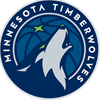 Minnesota Timberwolves - Marcus Smart
Minnesota Timberwolves - Marcus Smart
(Originally went No. 6 to the Celtics)
Nick: Smart probably went a few spots too high back in 2014, but he stepped in as an immediate rotation player on a good team and has progressed, albeit incrementally, since then. The Oklahoma State product has made strides as a playmaker (career-high 4.7 APG), helping to offset what's been a nightmare season shooting the ball (35.9% FG, 31.4% 3PT). The problem is this season hasn't been an outlier. Smart's 2016-17 shooting numbers are actually a slight improvement over his first two seasons, when he shot an aggregate 35.7 percent from the floor and 29.6 percent from three. He's only 22, so it's far too early to write him off as a non-threat offensively. However, with nearly 5,000 NBA minutes under his belt, Smart's shooting woes are well beyond excuse. That's not to say he can't be a productive NBA player, but he's still far from reaching his ceiling as an ace defender and capable spot-up shooter in the mold of a Patrick Beverley.
14.  Phoenix Suns - Jordan Clarkson
Phoenix Suns - Jordan Clarkson
(Originally went No. 46 to the Wizards and was traded on draft night to the Lakers)
James: I don't like Clarkson as a player. For a guard, he is not a great three-point shooter (34.1 percent over the last two years) and also averages just 3.3 assists per 36 minutes for his career. He has the size to guard point guards and shooting guards, but is still not a good defender. This pick is more of statement about who else was available here. At least Clarkson can score, and has some trade value, or at least he did have trade value before the Lakers signed him to that extension.










